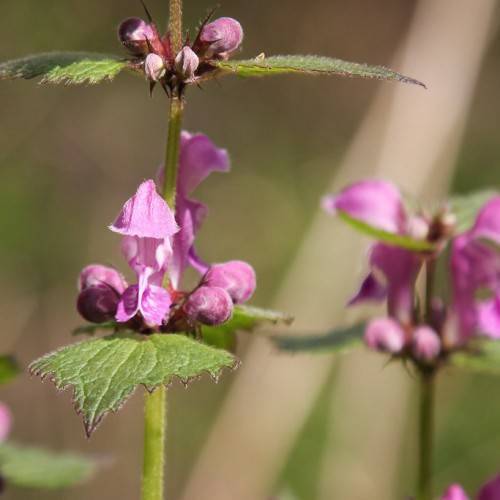
spotted deadnettle
Lamium maculatum 'Elisabeth de Haas'
Cycle:
Herbaceous Perennial
Watering:
Average
Hardiness Zone:
4 - 8
Flowers:
Flowers In Summer
Sun:
Deep shade, Filtered shade, Full sun only if soil kept moist, Part sun/part shade
Soil:
Well-drained
Fruits:
Fruits In Summer Ready In Fall
Leaf:
Yes
Growth Rate:
High
Maintenance:
Low
Salt Tolerant:
Yes
Care Level:
Medium
watering
The spotted deadnettle (Lamium maculatum 'Elisabeth de Haas') should be watered when the top inch of soil is dry to the touch. Depending on the temperature and humidity this could be every few days or every few weeks. During the summer months you may need to water more frequently, while during cooler months you may need to water less. The important thing is to make sure that the soil never gets too dry. It is better to water a little more frequently than to water infrequently and leave the soil too dry for too long.
sunlight
Spotted deadnettle (Lamium maculatum 'Elisabeth de Haas'), like all plants, need sunlight to survive. This plant should be kept in full sun for at least 6 hours a day to stay healthy and flowers will bloom better in more intense light. Partial shade should be avoided, as this can lead to spindly foliage growth and fewer flowers. The plant should be protected from strong winds that can damage the delicate leaves and flowers. In early winter when the plant is completely dormant, reduce the sunlight to a minimum.
pruning
You should prune your spotted deadnettle (Lamium maculatum 'Elisabeth de Haas') in early spring before new growth begins. Pruning can help keep the plant neatly shaped and encourage dense foliage and more blooms. Use deadheading to remove any of the flowering stems from the previous season that are brown or discoloured and no longer producing blooms. Remove them back to the base of the stem. To encourage the plant to fill out, prune back 1-third of the stems down to 2 to 3 inches above the ground. This will help promote bigger, bushier growth and flower production. Prune any stems that are tall and ungainly or overcrowded with blooms. This should be done with scissors or pruning shears.
